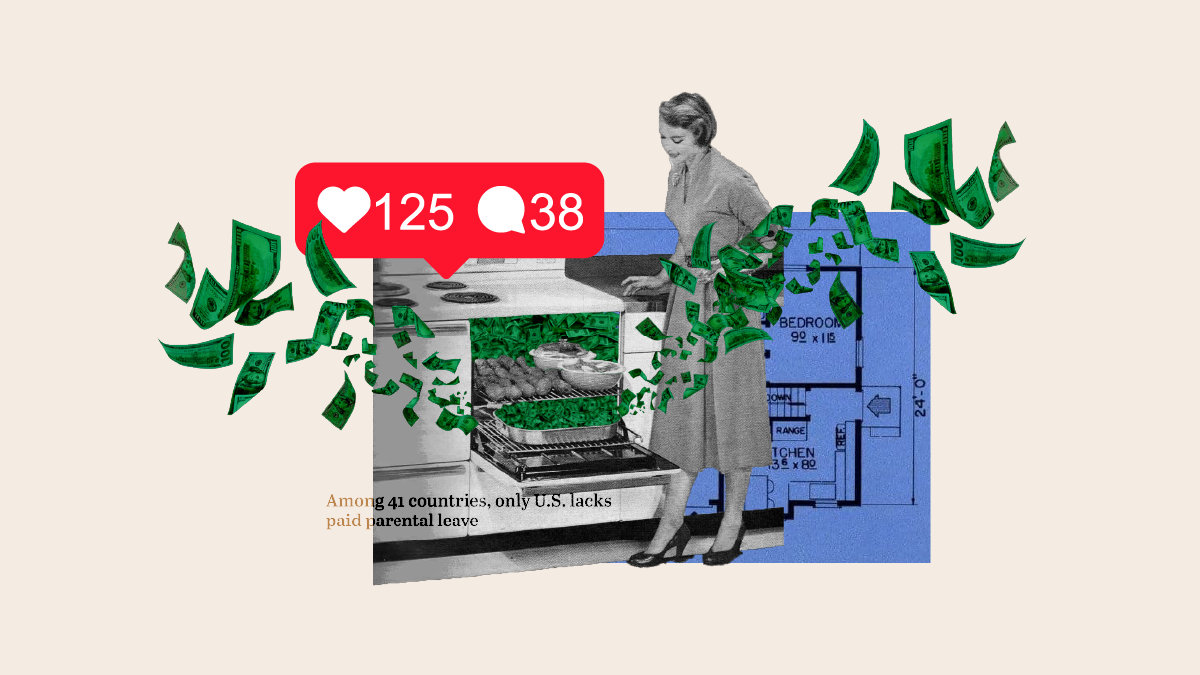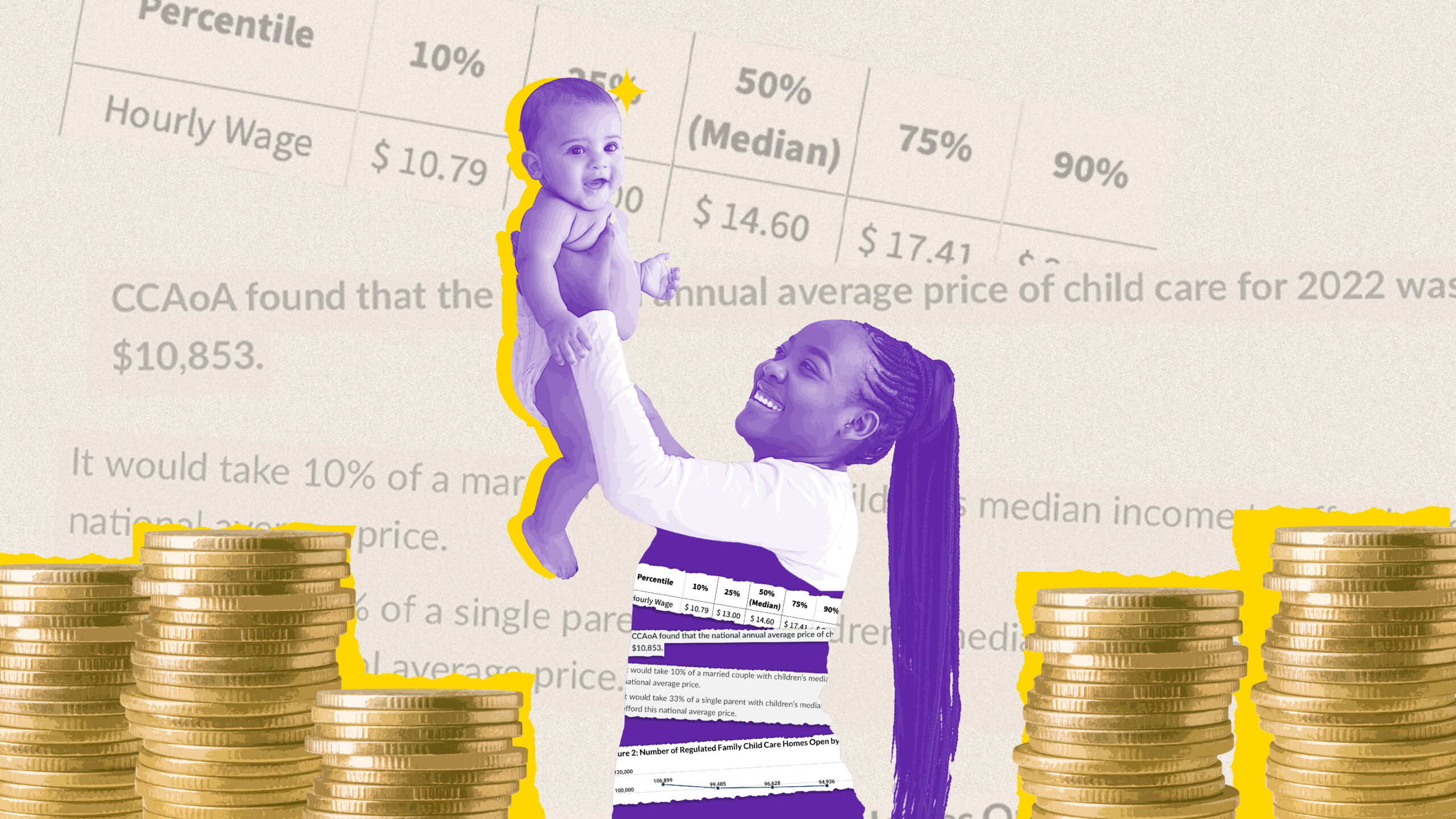Abortion rights, women of color, and LGBTQIA+ people are under attack. Pledge to join us in fighting for gender justice.
What TikTok’s Tradwives Aren’t Telling You

Tradwives. They’re all over our TikTok and Instagram feeds.
Whether they’re making sourdough starters or posting day-in-the-life videos, these glammed-to-the-max stay-at-home moms define themselves as “traditional wives” who prefer a “traditional role in marriage, including the beliefs that a woman’s place is in the home.”
Recently, influencer tradwives have soared in popularity. Take Hannah Neeleman, known as “Ballerina Farm,” who now boasts 10 million followers on Instagram, up from only 200,000 in 2021, sharing her life with eight children in rural Utah. Or Nara Smith, who has nearly 12 million followers on TikTok, posting viral recipe videos where she makes everything from homemade goldfish to Coca-Cola from scratch for her husband and children.
Don’t get me wrong: women should absolutely have the choice to live their lives and raise their children in whichever way they like. But as more and more women become enamored by this lifestyle, it’s time for more of us to follow the lead of Instagram users @scarlettlongstreet and @berecker to expose the truth about the tradwife movement.
Influencer tradwives are actually entrepreneurs.
As any tradwife will tell you, their whole shtick is that the husband is the breadwinner while the wife is the homemaker.
But this is deeply misleading as many of the most popular tradwives are entrepreneurs who are making some serious cash via their channels, complicating the idea that they’re committed to the “traditional gender roles” where a family lives solely off the husband’s income. For instance, as of 2025, Nara Smith’s net worth is estimated at $6 million, and Hannah Neeleman of Ballerina Farm fame brings in over $850,000 a year through her TikTok videos alone.
These influencer tradwives are hypocritically encouraging other women to devote themselves solely to being homemakers, while, in reality, they are career-driven savvy businessowners who are leveraging their “traditional homemaker aesthetic” to make a killing online.
Most people can’t afford this lifestyle.
Many women do not have the luxury to choose the tradwife life. For one thing, there are millions of families out there headed by single parents, who are overwhelmingly women. For single moms, the tradwife lifestyle is completely out of reach either due to a lack of time, caregiving support, finances, or a mixture of all three.
But even for two-parent families, this lifestyle is not often achievable. As raising children becomes more expensive, it’s become harder for families to financially justify leaving one partner out of the workforce, even if one partner would prefer to stay home.
On the flip side, if both parents want to work, it may not even be feasible given our country’s lack of affordable child care and paid leave policies, which often forces the mother out of the workforce, leaving her without the wealth and financial security that comes with staying in the job market.
Basically, as a result of lawmakers’ refusal to meaningfully invest in basic need programs for families, many moms—single or married—are not in the privileged position of getting to choose whether they can reasonably stay home with their children and make extravagant grilled cheese sandwiches from scratch. The reality for most women is far, far more complicated.
Equal partnerships are shown to make women happier.
Tradwives tend to glamorize non-equal partnerships, in which wives “submit to their husband and serve their husband and family.”
For example, tradwife Alena Kate Pettitt tweeted: “husbands must ALWAYS come first if you want to maintain a happy marriage.”
But this is demonstrably false: according to a survey from Pew Research Center, a majority of Americans say that sharing household chores is important for a successful marriage.
Unfortunately, child care and household tasks continue to disproportionately fall on women, even if both parents are working. But this unpaid care work has drastic consequences for women, including increased levels of stress, poor mental health, and even harms to cardiovascular health.
It doesn’t have to be this way.
Tradwives want you to think that their glamorous, traditional lifestyle is a virtuous decision in a society where women have few good options for how to raise their families.
But the life that they portray is an illusion. These ultra-wealthy women have the means to lead a life that most people can neither afford nor enjoy, while creating the false impression that they are doing it without a significant paycheck.
We’ve already seen the threats laid out in Project 2025 that enforce a vision of the family that relies on fixed and narrowly defined gender roles. We can’t let the illusion of the tradwife lifestyle be weaponized by policymakers to continue to implement sexist, anti-women policies targeted at repealing our basic freedoms.
Instead, to meaningfully help women form and raise their families, including the freedom to choose a tradwife lifestyle if that suits both partners, we need lawmakers who will commit to advancing robust and comprehensive policy solutions, such as expanded access to affordable child care, investments in family programs, and protections to ensure that people have the option to decide if and when they have a child. By not taking steps to provide overdue support to women and families, lawmakers are letting everyone down, tradwives included.




